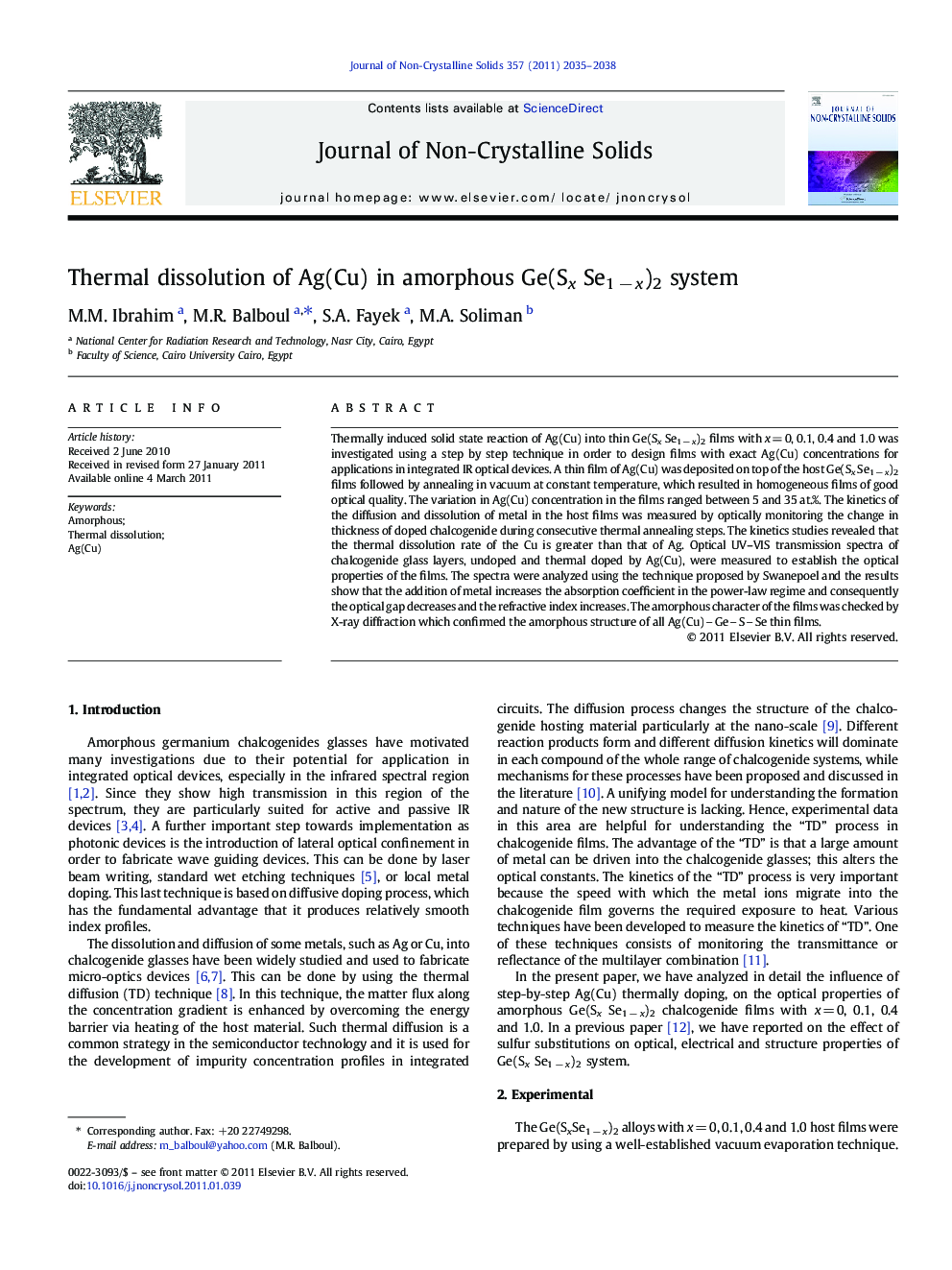| Article ID | Journal | Published Year | Pages | File Type |
|---|---|---|---|---|
| 1482308 | Journal of Non-Crystalline Solids | 2011 | 4 Pages |
Thermally induced solid state reaction of Ag(Cu) into thin Ge(Sx Se1 − x)2 films with x = 0, 0.1, 0.4 and 1.0 was investigated using a step by step technique in order to design films with exact Ag(Cu) concentrations for applications in integrated IR optical devices. A thin film of Ag(Cu) was deposited on top of the host Ge(Sx Se1 − x)2 films followed by annealing in vacuum at constant temperature, which resulted in homogeneous films of good optical quality. The variation in Ag(Cu) concentration in the films ranged between 5 and 35 at.%. The kinetics of the diffusion and dissolution of metal in the host films was measured by optically monitoring the change in thickness of doped chalcogenide during consecutive thermal annealing steps. The kinetics studies revealed that the thermal dissolution rate of the Cu is greater than that of Ag. Optical UV–VIS transmission spectra of chalcogenide glass layers, undoped and thermal doped by Ag(Cu), were measured to establish the optical properties of the films. The spectra were analyzed using the technique proposed by Swanepoel and the results show that the addition of metal increases the absorption coefficient in the power-law regime and consequently the optical gap decreases and the refractive index increases. The amorphous character of the films was checked by X-ray diffraction which confirmed the amorphous structure of all Ag(Cu)GeSSe thin films.
Research Highlights► Thin films modified with metals were successfully prepared. ► The Eg values decrease with metal addition. ► The introduction of Cu(Ag) into the host film increase the refractive index. ► X-ray confirms that Cu diffuse more rapidly than Ag.
